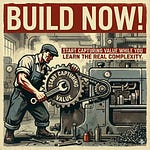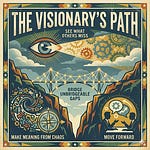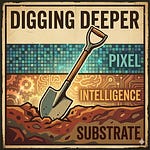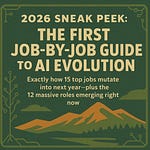I wrote this guide because I couldn’t find it anywhere online.
No one is tell people who use ChatGPT when they need to graduate to the API, why, and how to do it.
If you’re an engineer, this stuff is easy. If you’re not, it feels impossible.
Every day, thousands of people hit the same wall with ChatGPT. Rate limit exceeded. Context window full. The same product description they've pasted forty times today needs pasting again. They vent their frustration online, and the response is always the same: elaborate workarounds. "Try Claude instead." "Open multiple accounts." "Wait until 3 AM when the limits reset."
Most of the time, nobody says the obvious thing: you're using the wrong interface for the work you're trying to do.
We've created this bizarre situation where people are using AI to write entire applications but can't use code to access AI better. They're fighting with rate limits at 10 AM, maintaining spreadsheets to track which ChatGPT conversation contains which insight, copying and pasting context until their fingers hurt—and they think this is just how AI works.
It's not. There's another door to the same AI, and if you don’t know how to use it already, nobody's showing it to you.
The people who know about APIs aren't in the threads complaining about rate limits. They've forgotten what it's like to fight the interface because they stopped fighting it months ago. The gap between them and everyone else isn't technical skill—it's information. It's knowing that the chat interface you're using was built (originally) for demos, not production work. It's knowing that the same AI trapped behind rate limits in your browser can process hundreds of documents simultaneously through a different door.
Search for help, and you'll find two categories: technical documentation that assumes you already know why you'd want an API, and ChatGPT tutorials teaching you increasingly elaborate workarounds for problems that shouldn't exist. What's missing is the guide that says: you've hit the ceiling of what the chat interface was designed to do, and that's not your failure.
The technical barrier has never been lower. The same AI you're chatting with can literally teach you how to use its API. But the conceptual barrier—not knowing you're using a demo, not knowing there's a better way, accepting unnecessary friction as "just how AI works"—that barrier remains invisible.
You're not bad at AI. You're not doing it wrong. You've just outgrown the training wheels, and nobody's told you they come off. That’s what this guide is for—learn when to use (and not use) an API, how to recognize the signs, and find a super accessible guide for beginners (including notes on security and pricing) so you can get going and not feel worried about safety.
So let’s dive in and explore the other ChatGPT (or Claude, or Gemini)! I promise it’s not as scary as it sounds…
PS. And if you’re an engineer, send this to some folks you know who need to learn to use the API…
Listen to this episode with a 7-day free trial
Subscribe to Nate’s Substack to listen to this post and get 7 days of free access to the full post archives.













